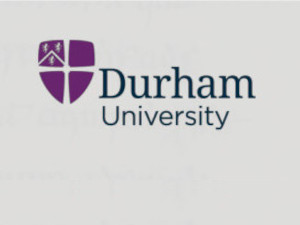Paolo Monella, Elena Spangenberg Yanes The new edition of Priscian’s Ars grammatica history of the tradition and innovative digital models Durham (online) 2021
Paolo Monella, Elena Spangenberg Yanes The new edition of Priscian’s Ars grammatica history of the tradition and innovative digital models Durham (online) 2021

Details
| Title | The new edition of Priscian’s Ars grammatica: history of the tradition and innovative digital models |
| Speakers | Paolo Monella (1st part of the paper), Elena Spangenberg Yanes (2nd part) |
| Conference | Text and Textuality Conference (programme) |
| When | July 15 ,2021 |
| Where | Online (Zoom) |
| Organisation | University of Durham, UK |
| Language | English |
Dettagli
| Titolo | The new edition of Priscian’s Ars grammatica: history of the tradition and innovative digital models |
| Relatori | Paolo Monella (1a parte del contributo), Elena Spangenberg Yanes (2a parte) |
| Convegno | Text and Textuality (locandina) |
| Quando | 15 luglio 2021 |
| Dove | Online (Zoom) |
| Organizzazione | University of Durham, UK |
| Lingua | Inglese |
Materials
- Slides of my part only
- Slides of the whole talk (including the part by E. Spangenberg Yanes)
- Video recording
Materiali
- Slide della mia parte
- Slide dell’intero intervento (inlcusa la parte di E. Spangenberg Yanes)
- Registrazione video
Abstract
The ERC project PAGES (Priscian’s Ars Grammatica in European Scriptoria), led by Michela Rosellini at Sapienza University of Rome, sets forth to produce a new critical edition of the Ars, a long-time desideratum in Latin philology. PAGES applies the Lachmannian method with the aim of producing both a print and a digital critical edition, based on a new comprehensive recensio of the manuscript and early print tradition of the work.
The first part of the paper focuses on the digital methodology of the project, which provides additional features that the print medium could not have hosted. The digital infrastructure is built around Cadmus, a modular open source software framework whose data structures allow to model complex objects with more flexibility than through the TEI-XML single-hierarchy structure (although Cadmus can still export to TEI-XML). In the instance of Cadmus tailored for PAGES, Priscian’s Latin text with critical apparatus and English translation is integrated with: diplomatic transcriptions of the Greek parts and the literary fragments in the Ars; collections of the early medieval glosses on Priscian’s Graeca and of the Humanistic interpolations in the Ars; a catalogue of Priscian’s 8th-10th-century mss. Digital markup will be provided for the literary citations and the linguistic content of the work.
The second part of the paper presents the first outcomes of the collation, with particular regard to the geographical characterisation of the main traditional branches. Not only the southern-Italian tradition is independent of the Carolingian one, as De Nonno demonstrated long ago, but within the Carolingian branch it is possible to detect several manuscripts higher in the stemma than the witnesses used by the former editor, Hertz (1855-59). Another important feature of the transmission is the derivation of surviving witnesses or even lost hyparchetypes from multiple antigraphs: the textual and codicological evidence demonstrates that several manuscripts change their position within the stemma from one section of the Ars to another. The better understanding of the medieval tradition enables various improvements of the constitutio textus, as it will be shown through selected examples.

